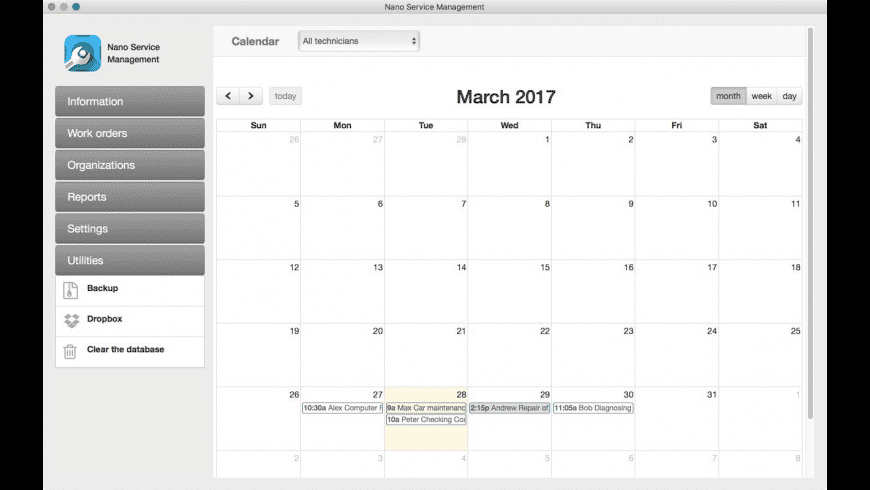Nanoservice is an antipattern where a service is too fine-grained. A nanoservice is a service whose overhead (communications, maintenance, and so on) outweighs its utility. Like Steve and others, Arnon concludes that Microservices is just another name for SOA. Battery thermal management systems contain several such modules arranged in a series/parallel network. In this paper, two novel arrangements for configuring single cell to battery modules are presented. Here studies are carried out with nano-enhanced phase change materials.-Two-layer 7 × 7 × 1 arrangement. Nano continues its efforts towards the leading Facility Management & Contracting Firm in Middle East, GCC & eventually worldwide, by consistently delivering projects that meet international standards.
Unlike common Windows Server 2016 edition, Nano Server hasn’t got any graphical interface or an opportunity to log on locally or through Remote Desktop (RDP). So by 99.9% Windows Nano Server 2016 is managed remotely using PowerShell or WMI. In this article, we’ll dwell on the most common methods of Nano Server remote management.
Nano Server provides the following management capabilities:
Nano Server Recovery Console
Nano Server Recovery Console (or Emergency Management Console) is the only way to manage Nano Server from the local console. However, it offers a very limited functionality necessary to configure network parameters or remote connectivity options. In Nano Server Recovery Console you can view or edit IP address settings, routing tables, firewall rules, WinRM. Also, you can restart or turn off your server using this console.
PowerShell Direct
If Nano Server is a virtual machine running on a Hyper-V server, you can use PowerShell Direct to directly connect to the VM via the VMbus from the Hyper-V host server. For example, you can start a PoSh session to Nano Server as follows:
Enter-PSSession -VMName 'ws2016nano' -Credential (Get-Credential)
At the same time, the VM running Nano may be located in an isolated network or have no network adapter at all.
PowerShell Remoting
PowerShell Remoting is the main tool to configure and manage Nano Server. It is accessed via WinRM (Windows Remote Management) services running on Nano Server.
To connect to Nano Server, enable WinRM on the side of a local computer:net start WinRM

Then add the IP address or the name of your Nano Server to the list of trusted WinRM hosts. (You will have to do it, if your Nano Server and the client are not in the same Active Directory domain):
Set-Item WSMan:localhostClientTrustedHosts -Value '192.168.2.17' –Concatenate

Set-Item WSMan:localhostClientTrustedHosts -Value '*'Now you can start a remote session to Nano Server using Enter-PSSession cmdlet. You can specify the name of the user to authenticate on Nano Server directly or via PSCredential object:
Enter-PSSession -ComputerName 192.168.2.17 -Credential Administrator
or
Enter-PSSession -ComputerName 192.168.2.17 -Credential (Get-Credential)
After the session is established, you can run the necessary PowerShell cmdlets to be executed on the remote Nano Server. Please, note that not all cmdlets available in the full edition of Windows Server 2016 are supported in Nano Server environment. Using this command you can view the full list of available commands supported in Nano Server:
Get-Command –CommandType cmdlet
To exit the remote PowerShell session, run:Exit-PSSession

Server Manager Console and MMC Snap-Ins
Nano Server supports remote management using graphic consoles. These are Server Manager and other specialized MMC consoles that can be used to connect to Nano Server if it has the corresponding role. For example, these are DNS, Cluster Failover Manager, Hyper-V Manager, DHCP, and other consoles.
To do it, it is enough to add Nano Server to Server Manager (All Servers ->Add Server) and provide the credentials.
Available MMC snap-ins to manage roles can be run directly from Server Manager. For example, DNS console.
Or directly from the necessary snap-in, like classic Computer Management.
Azure Server Management ToolsNano Server supports connection and management directly through the Azure Web Services using Server Management Tools (SMT). This feature is available for most Azure subscriptions and doesn’t need to be paid separately. To manage Nano Server from Azure cloud, you have to deploy a separate on-premises gateway.
Finally, let’s list a few less popular remote server management options. These include: Windows Management Instrumentation (WMI), Virtual Machine Manager (VMM) and System Center Operations Manager (SCOM).
How to Run Windows File Explorer Elevated (as...
April 16, 2021
Nano Service Management Llc
Using Malicious Software Removal Tool (MRT.exe) on Windows
April 15, 2021How to Clean Up Large System Volume Information...
April 15, 2021Nano Service Management Company
Enable Windows Lock Screen after Inactivity via GPO
April 8, 2021Nano Service Management Software
How to Create and Manage Scheduled Tasks with...
April 7, 2021